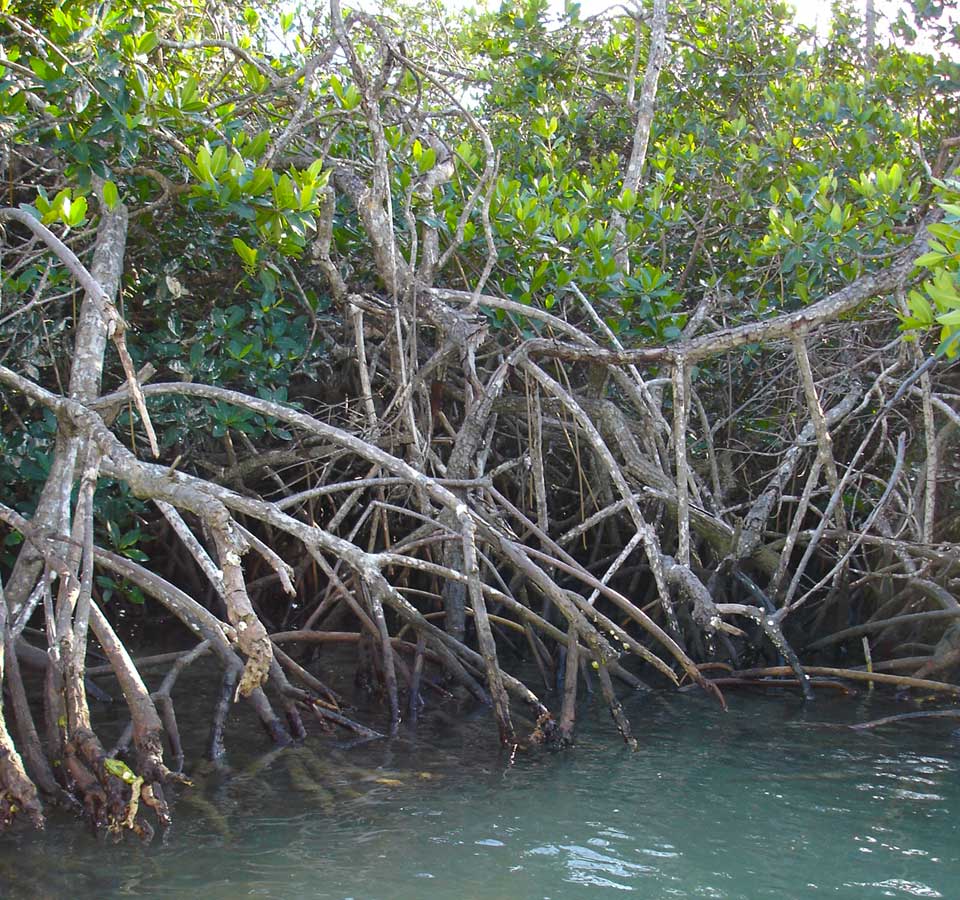How Does Carbon Move From The Atmosphere To Plants And Then From Plants To Animals
VIDEO: What is the carbon wheel? Hither's an overview in nether two minutes. Transcript

Blue Carbon
Blueish carbon is the term for carbon captured by the world'south ocean and coastal ecosystems. Sea grasses, mangroves, salt marshes, and other systems forth our coast are very efficient in storing CO2. These areas also absorb and store carbon at a much faster rate than other areas, such as forests, and can continue to exercise then for millions of years. The carbon found in coastal soil is often thousands of years old. When these systems are damaged or disrupted by homo activity, an enormous amount of carbon is emitted back into the atmosphere, contributing to climatic change.
Carbon is the foundation of all life on Earth, required to form complex molecules like proteins and Deoxyribonucleic acid. This element is also plant in our atmosphere in the form of carbon dioxide (CO2). Carbon helps to regulate the Earth's temperature, makes all life possible, is a central ingredient in the food that sustains u.s.a., and provides a major source of the energy to fuel our global economy.
The carbon cycle describes the process in which carbon atoms continually travel from the atmosphere to the Globe and so back into the atmosphere. Since our planet and its atmosphere class a closed environs, the amount of carbon in this system does not change. Where the carbon is located — in the atmosphere or on Globe — is constantly in flux.
On Earth, most carbon is stored in rocks and sediments, while the rest is located in the ocean, temper, and in living organisms. These are the reservoirs, or sinks, through which carbon cycles.
Carbon is released back into the atmosphere when organisms dice, volcanoes erupt, fires bonfire, fossil fuels are burned, and through a diverseness of other mechanisms.
In the case of the body of water, carbon is continually exchanged between the ocean'due south surface waters and the atmosphere, or is stored for long periods of time in the bounding main depths.
Humans play a major part in the carbon bicycle through activities such every bit the burning of fossil fuels or land development. As a result, the corporeality of carbon dioxide in the atmosphere is speedily rising; it is already considerably greater than at any time in the last 800,000 years.
Video Transcript
What is the carbon bicycle? Carbon is the chemic backbone of all life on Earth. All of the carbon nosotros currently have on Earth is the same amount we have always had. When new life is formed, carbon forms primal molecules like poly peptide and DNA. It'southward also found in our atmosphere in the form of carbon dioxide or CO2. The carbon cycle is nature'south way of reusing carbon atoms, which travel from the temper into organisms in the Earth and then back into the temper over and once again. Most carbon is stored in rocks and sediments, while the rest is stored in the ocean, temper, and living organisms. These are the reservoirs, or sinks, through which carbon cycles. The ocean is a giant carbon sink that absorbs carbon. Marine organisms from marsh plants to fish, from seaweed to birds, also produce carbon through living and dying. Sometimes dead organisms become fossil fuels that go through combustion, giving off CO2, and the cycle continues.
Source: https://oceanservice.noaa.gov/facts/carbon-cycle.html
Posted by: mcleodsallithere.blogspot.com

0 Response to "How Does Carbon Move From The Atmosphere To Plants And Then From Plants To Animals"
Post a Comment